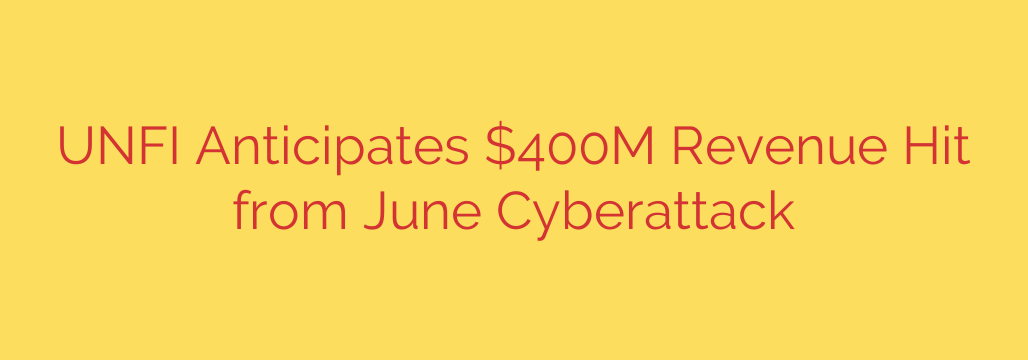
Cyberattack Exposes a $400 Million Vulnerability in the Supply Chain
In today’s interconnected world, the threat of a cyberattack is no longer a distant possibility—it’s a critical business risk with staggering financial consequences. A recent incident involving a major U.S. food distributor, United Natural Foods, Inc. (UNFI), serves as a stark reminder of just how devastating a single breach can be. The company anticipates a potential revenue loss of approximately $400 million for its fiscal year, directly stemming from a cyberattack that crippled its operations in June.
This event highlights a crucial lesson for businesses of all sizes: cybersecurity is not just an IT problem; it’s a core component of financial stability and operational resilience.
The Immediate Impact: Operations Grinding to a Halt
When the cyberattack hit, the company was forced to act swiftly to contain the damage. This involved taking significant portions of its technology infrastructure offline, a necessary move that caused immediate and widespread disruption. For a distributor that serves as a vital link in the nation’s food supply chain, the consequences were severe.
The shutdown led to temporary but significant disruptions in services to both customers and suppliers. Orders were delayed, logistics were tangled, and the seamless flow of goods was interrupted. To manage the crisis, the company had to activate its business continuity plans, engage third-party cybersecurity experts, and coordinate with law enforcement agencies to investigate the breach and restore its systems.
The Financial Fallout: A Staggering Price Tag
While the company has since substantially restored its systems, the financial damage was already done. The operational downtime and recovery efforts have translated into a massive financial hit. UNFI was forced to revise its financial outlook for the fiscal year, lowering its net sales forecast from a range of $30.1 billion-$30.5 billion to a new, lower range of $29.8 billion-$30.0 billion.
This projected $400 million reduction in net sales underscores the tangible cost of a cyberattack. Beyond the lost revenue, the company also incurred substantial expenses related to remediation, restoration, and securing its network against future threats. These costs can include everything from hiring forensic investigators and legal counsel to investing in new security hardware and software.
Lessons Learned: Protecting Your Business from a Similar Fate
This incident is more than just a headline; it’s a cautionary tale for every organization. A vulnerability in one link of the supply chain can cause a ripple effect, impacting countless partners and customers. Here are actionable security measures every business should consider to avoid a similar outcome:
Develop and Test an Incident Response Plan: Don’t wait for an attack to figure out what to do. Create a detailed plan that outlines roles, communication strategies, and technical procedures for containment and recovery. Crucially, this plan must be tested regularly through drills and simulations to ensure it works under pressure.
Invest in Proactive Cybersecurity: A defensive posture is no longer enough. Modern security requires proactive threat hunting, advanced endpoint detection, and continuous network monitoring. Investing in a robust security stack can help you identify and neutralize threats before they cause significant damage.
Prioritize Employee Training: Your employees are your first line of defense. Regular, engaging training on how to spot phishing emails, use strong passwords, and recognize social engineering tactics can drastically reduce the risk of an initial breach.
Maintain Secure, Offline Backups: In a ransomware attack, having clean, isolated backups is your most powerful recovery tool. Ensure your data is backed up regularly to a location that is disconnected from the main network, making it inaccessible to attackers.
Secure Your Supply Chain: Your organization’s security is only as strong as your partners’. Vet the cybersecurity practices of your critical vendors and suppliers. A breach in their systems could easily become a breach in yours.
The reality is that cyberattacks are becoming more sophisticated and frequent. As this incident proves, the cost of inaction is far greater than the cost of prevention. By investing in robust security measures and preparing for the worst, businesses can protect their operations, their finances, and their reputation in an increasingly uncertain digital landscape.
Source: https://securityaffairs.com/180050/security/united-natural-foods-expects-400m-revenue-impact-from-june-cyber-attack.html








